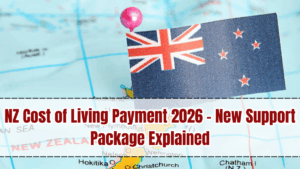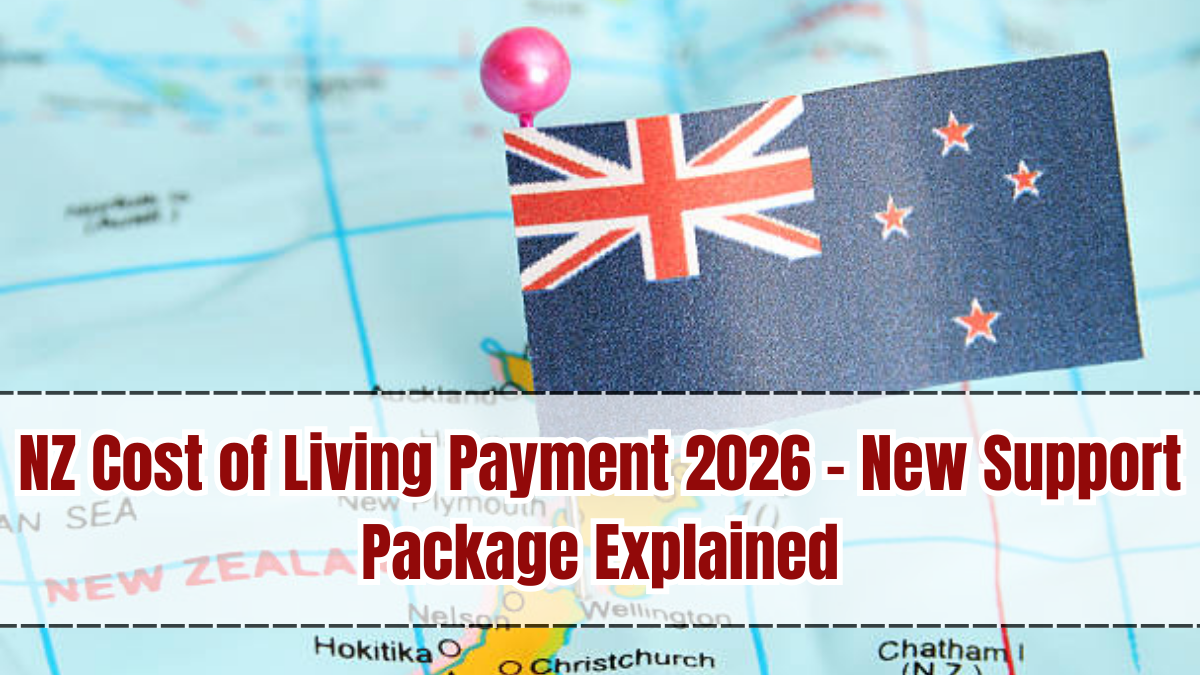The New Zealand Government has confirmed that the Cost of Living Payment will continue into 2026, offering extended relief to households struggling with the persistent rise in everyday expenses. Managed by the Ministry of Social Development (MSD), this package provides direct financial support to low- and middle-income New Zealanders, ensuring that essential needs like food, housing, electricity, and fuel remain within reach despite economic challenges.

Why the 2026 Package is Significant
While inflation has started to ease in some sectors, the cost of essential goods and services remains high. Grocery prices, power bills, rent, and transport costs continue to put pressure on households. The 2026 Cost of Living Payment is important because it:
-
Provides immediate cash relief to those most affected by rising costs.
-
Supports vulnerable groups such as seniors, students, and families with dependent children.
-
Strengthens economic resilience by helping people pay for essentials on time.
-
Reinforces the government’s focus on social equity by targeting households most in need.
Key Features of the 2026 Cost of Living Payment
The government has adjusted the package for 2026 to reflect current conditions. Some of the key features include:
-
Higher Payment Amounts compared to previous years, to offset ongoing inflation.
-
Expanded Eligibility criteria to include more low-income earners and working families.
-
Direct Deposit Priority to ensure faster payments.
-
Quarterly Payment Schedule rather than one-off support, to provide steady relief across the year.
Expected Payment Amounts in 2026
Based on MSD announcements and past payment structures, here are the estimated payment ranges for 2026:
| Household Type | Estimated 2026 Rebate |
|---|---|
| Single individual | NZ$120 – NZ$150 |
| Couple with no children | NZ$180 – NZ$220 |
| Single parent with one child | NZ$200 – NZ$240 |
| Family of four (2 adults + 2 children) | NZ$320 – NZ$380 |
These payments may be adjusted slightly throughout the year depending on government budgets and inflationary trends. Larger families are expected to receive the highest levels of support.
Payment Dates for 2026
Unlike earlier years when the benefit was issued in lump sums, the 2026 package introduces quarterly payments. Tentative dates are as follows:
| Quarter | Payment Date (Expected) |
|---|---|
| Q1 2026 | February 17, 2026 |
| Q2 2026 | May 19, 2026 |
| Q3 2026 | August 18, 2026 |
| Q4 2026 | November 16, 2026 |
This new quarterly cycle ensures that households receive regular cash infusions throughout the year, easing budgeting pressure and reducing financial strain.
Eligibility Rules in 2026
Eligibility for the 2026 Cost of Living Payment will remain income-tested and residency-based. To qualify, individuals must:
-
Be a New Zealand resident aged 18 or older.
-
Have an annual income below the MSD income thresholds for 2026.
-
File an income tax return with Inland Revenue (IRD) if required.
-
Not receive overlapping benefits that already provide equivalent financial relief.
Groups most likely to qualify include:
-
Families with dependent children.
-
Seniors on modest pensions.
-
Students and part-time workers.
-
Low-income individuals and couples.
How Payments Will Be Distributed
MSD will continue to use an automatic payment system, which means most recipients will not need to apply. Payments will be sent via:
-
Direct Deposit: Funds credited directly into recipients’ bank accounts on the scheduled date.
-
Cheque Payments: For those without bank details on file, though delivery times may vary.
-
My MSD Portal Notifications: Beneficiaries can check their payment status online.
To avoid missed or delayed payments, it is essential for recipients to ensure their bank account details and personal information are updated with MSD.
Importance of Filing Taxes
Filing taxes remains a crucial requirement for eligibility. Even if you had little or no income in 2025, filing ensures MSD and IRD have accurate income information. Tax filing allows the government to:
-
Verify income and household size.
-
Determine the correct payment level.
-
Prevent duplicate or incorrect payments.
Benefits Beyond Households
The Cost of Living Payment 2026 not only helps individuals but also boosts the wider economy. By injecting money directly into households, the program supports:
-
Retail and grocery stores – where most funds are spent.
-
Utility companies and landlords – as recipients use funds to pay essential bills.
-
Local communities – as small businesses benefit from increased spending.
This creates a ripple effect that supports both economic activity and social wellbeing.
Tips to Manage the 2026 Rebate
To maximize the impact of the payment, households should:
-
Focus spending on groceries and essentials rather than discretionary purchases.
-
Plan quarterly budgets around the payment dates to avoid running out of funds.
-
Save a portion of the rebate for unexpected costs, like medical bills or repairs.
-
Use discounts, bulk purchases, and supermarket specials to stretch the payment further.
FAQs
How much is the NZ Cost of Living Payment in 2026?
Payments range from NZ$120 for singles to around NZ$380 for larger families, depending on household size and income.
How often will the payment be made in 2026?
Payments will be issued quarterly (four times a year) in February, May, August, and November.
Do I need to apply for the rebate?
No. Payments are automatic if you meet MSD’s eligibility requirements and have up-to-date records.
Who qualifies for the 2026 payment?
Low- and middle-income New Zealand residents who meet income thresholds and residency requirements.
How will the payment be delivered?
Through direct deposit into bank accounts or by cheque if no bank details are available.
Click here to know more.



